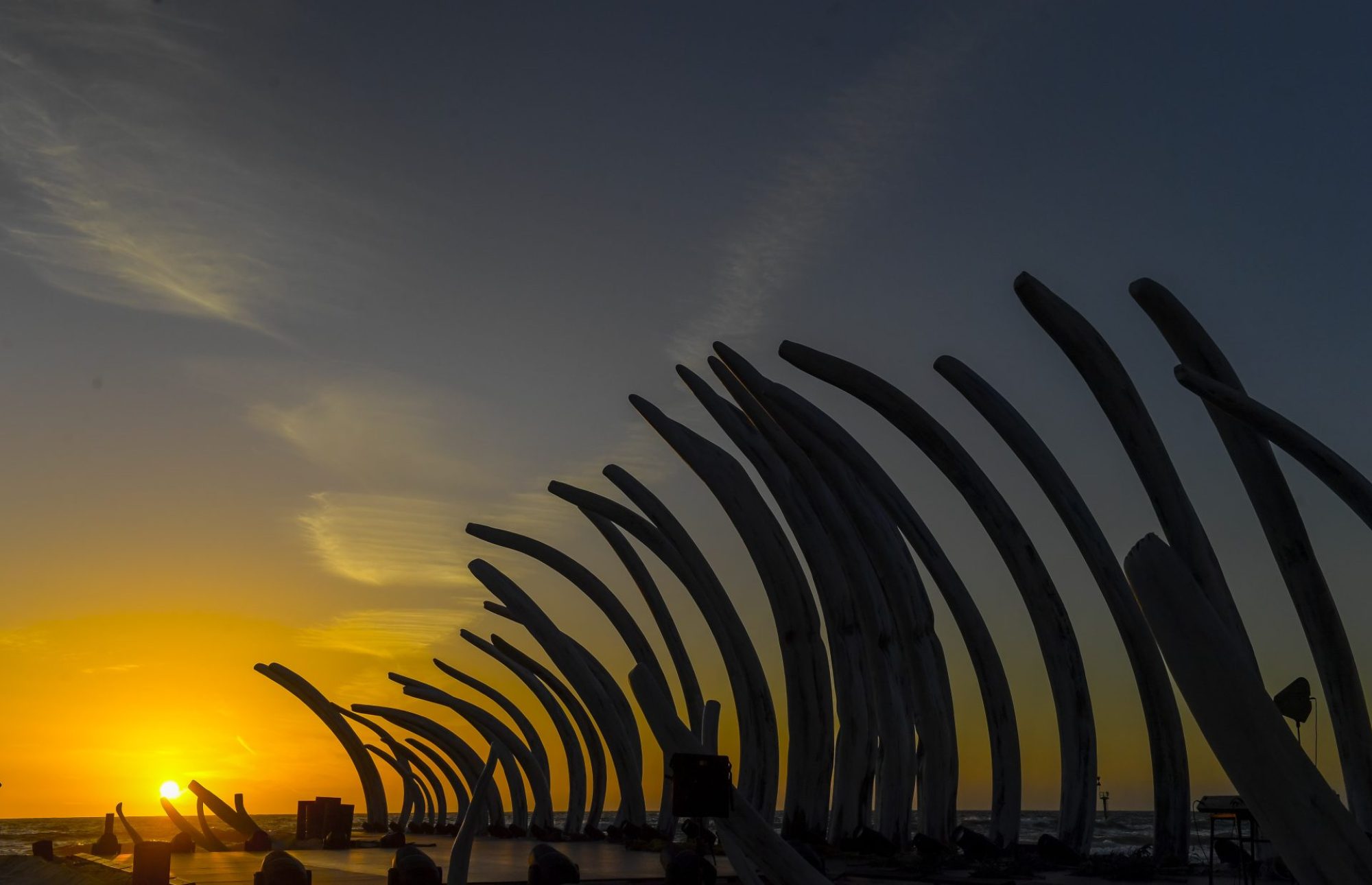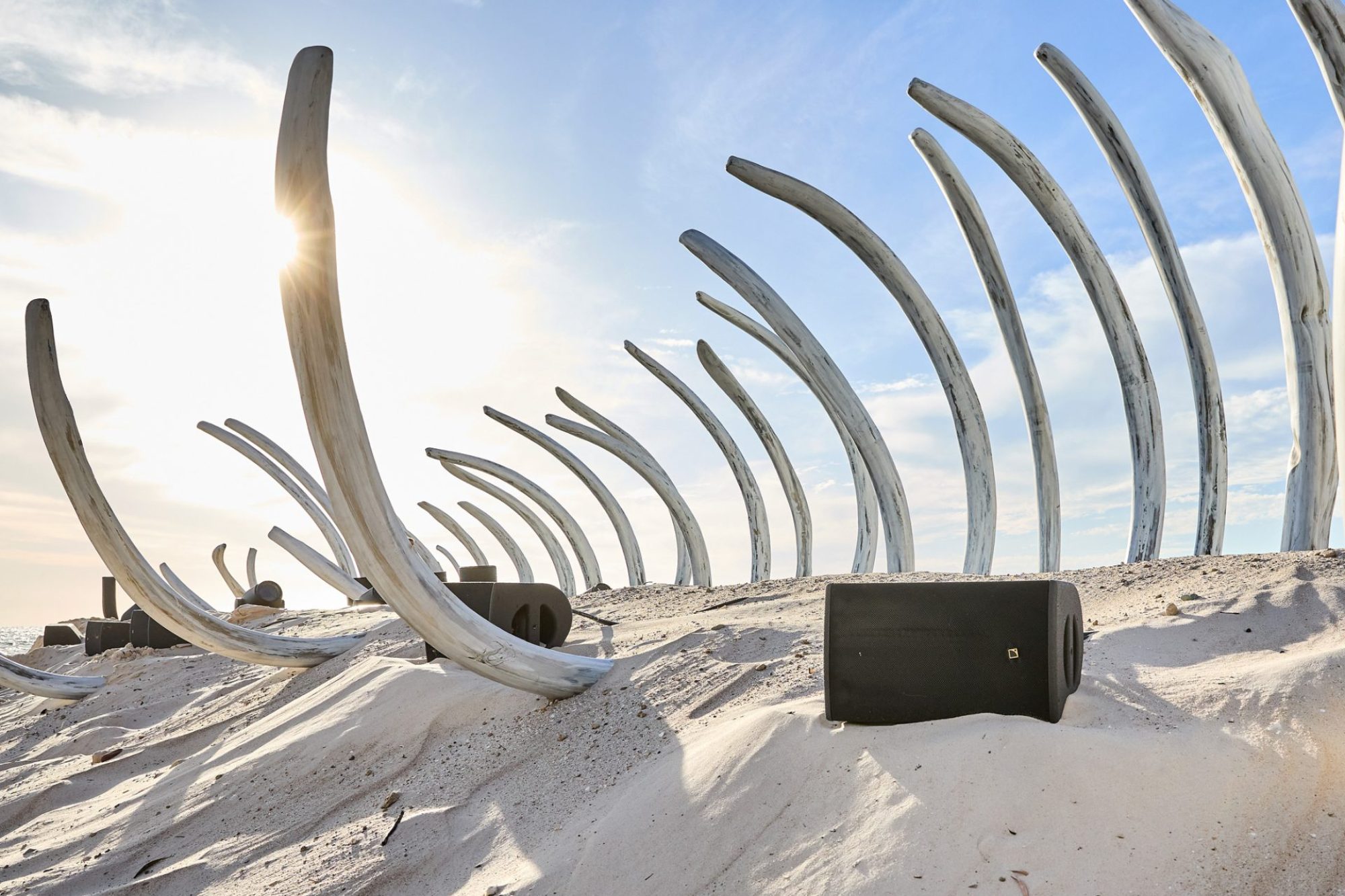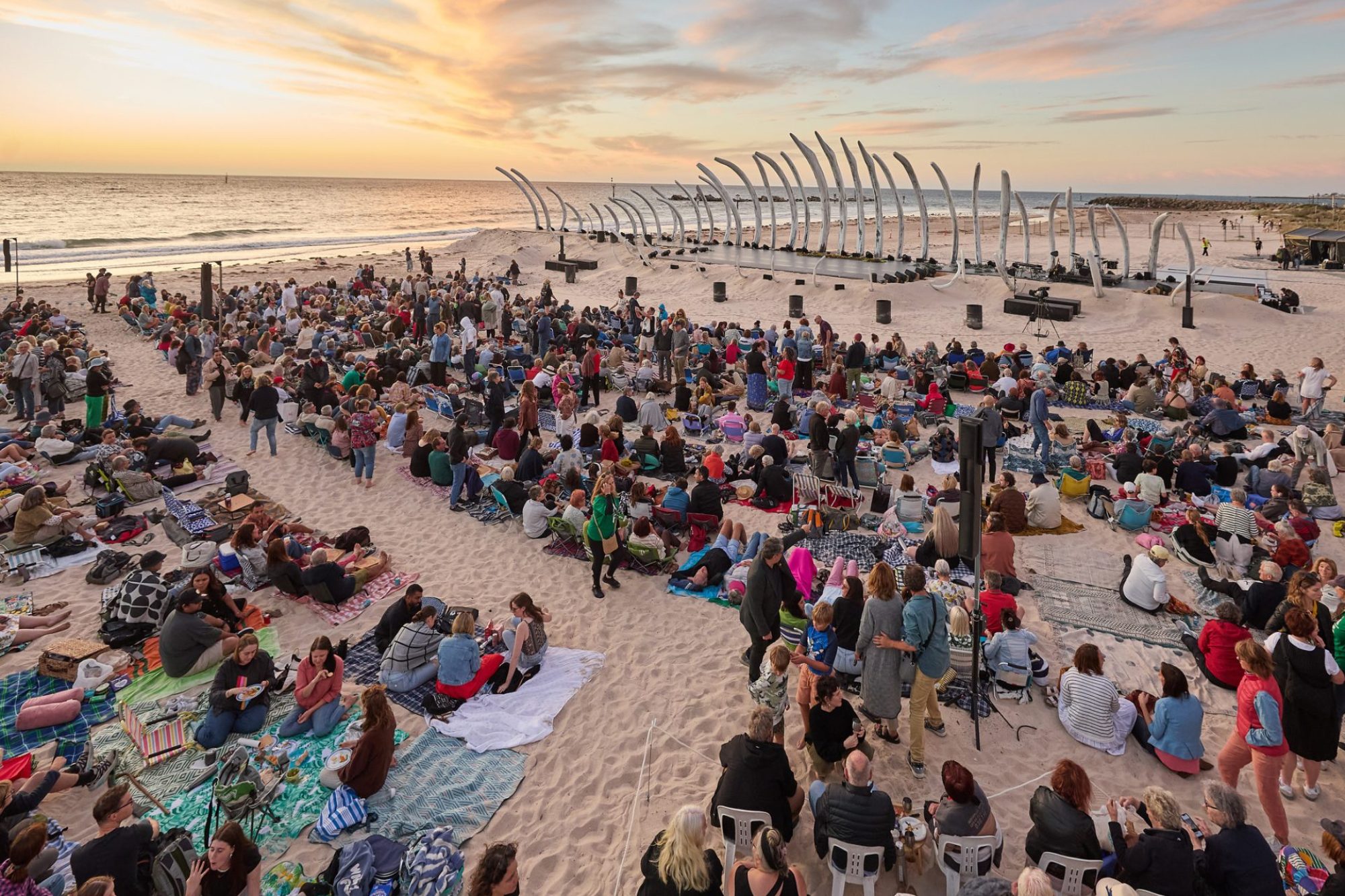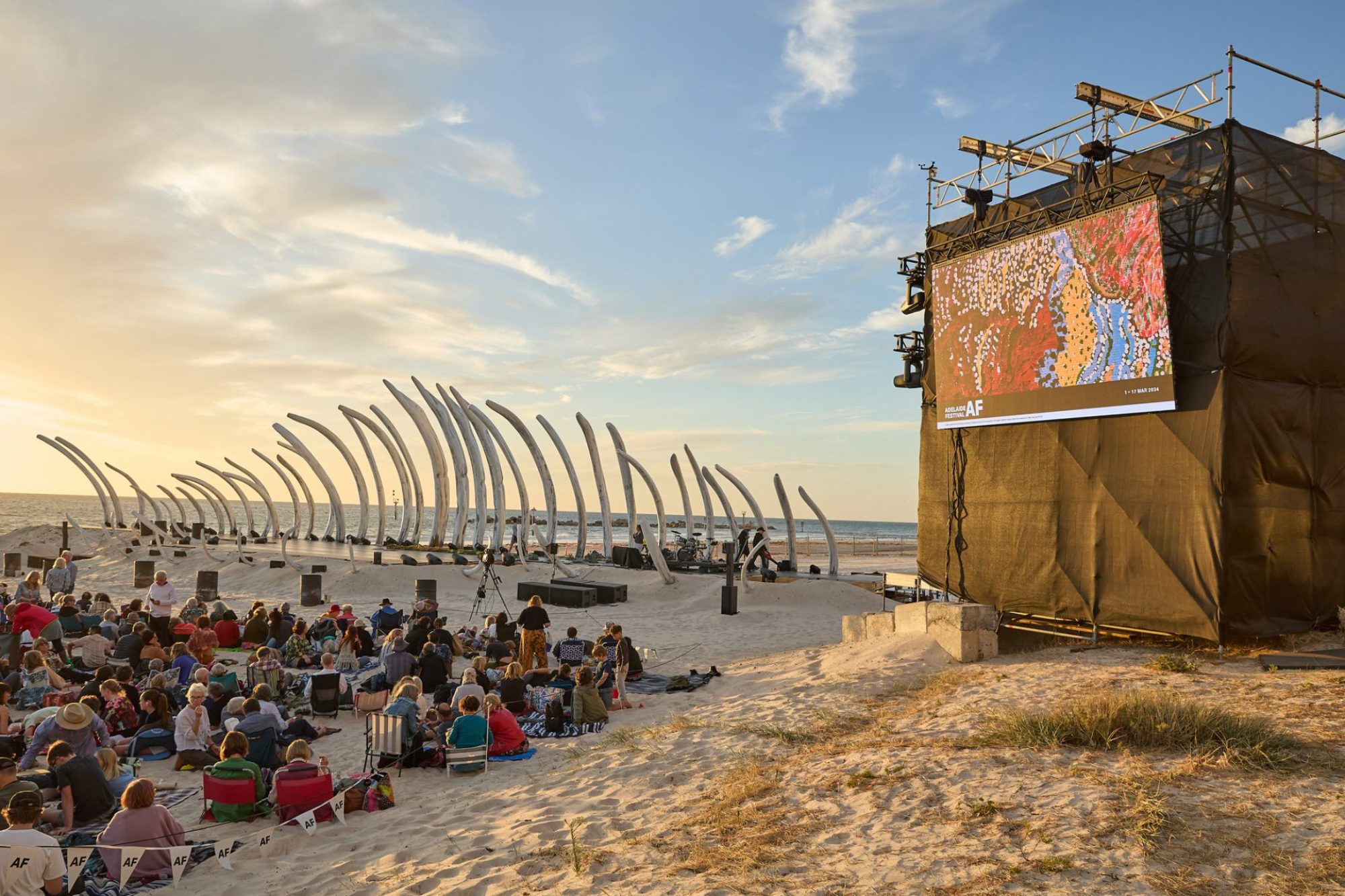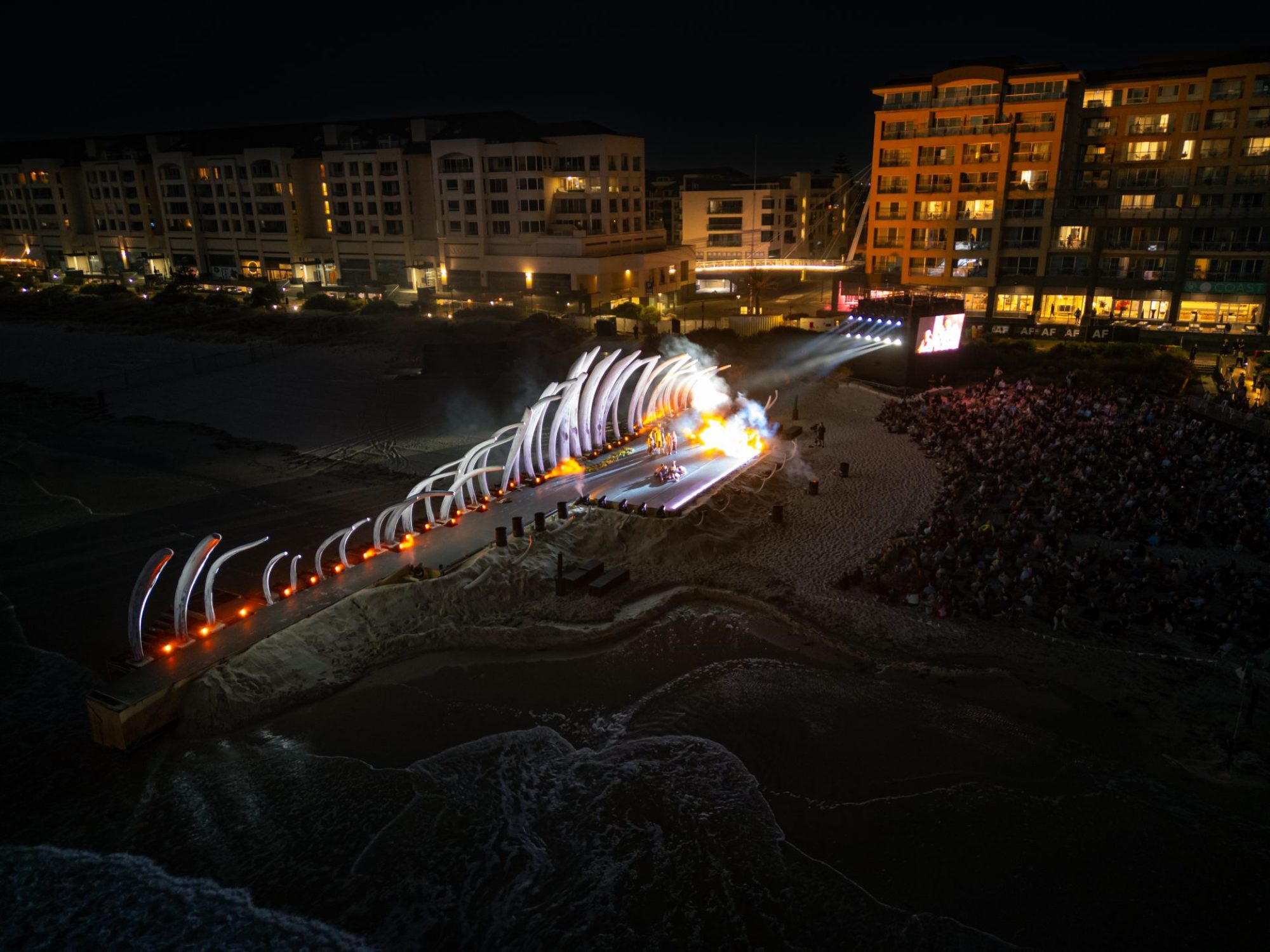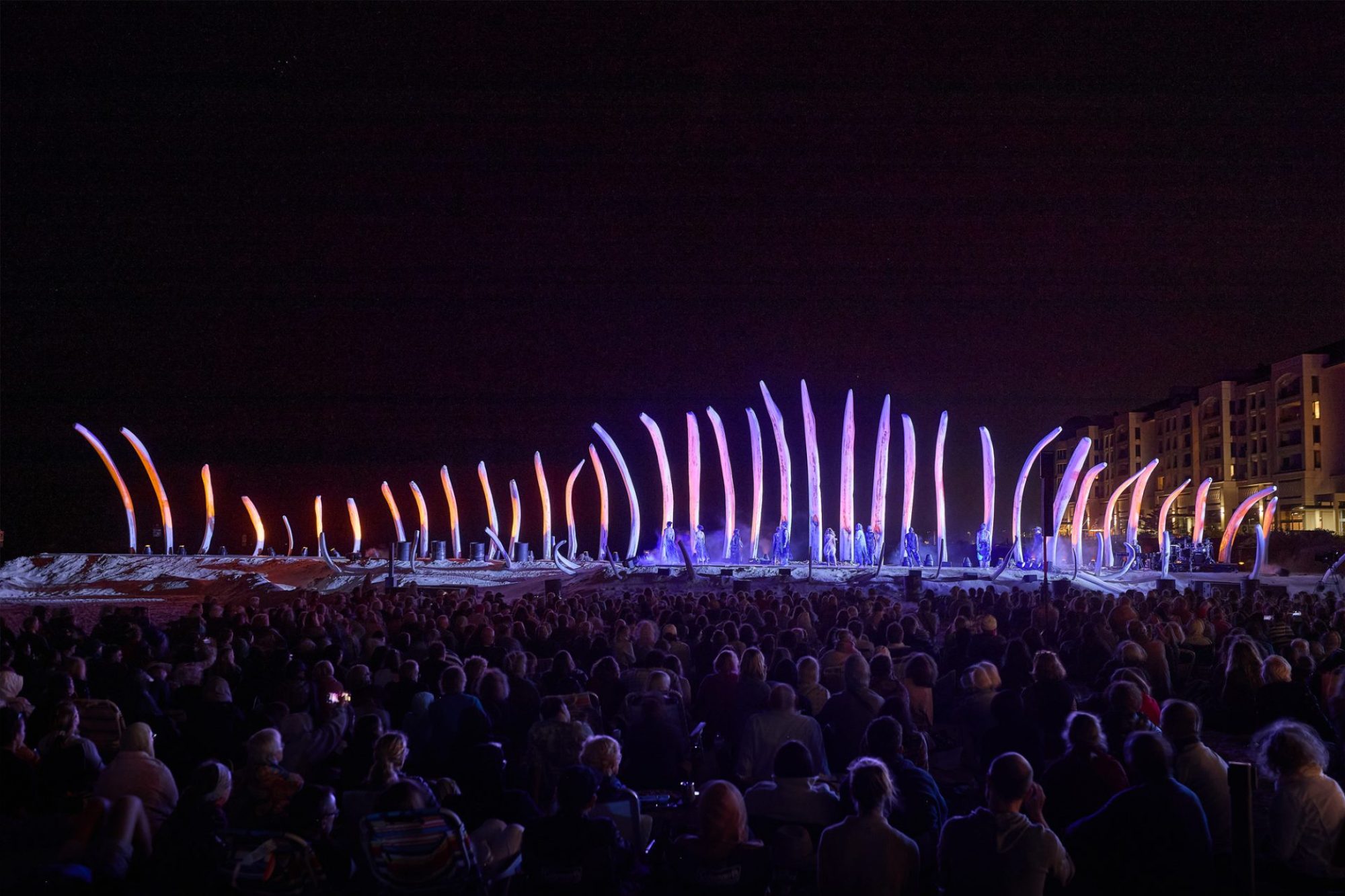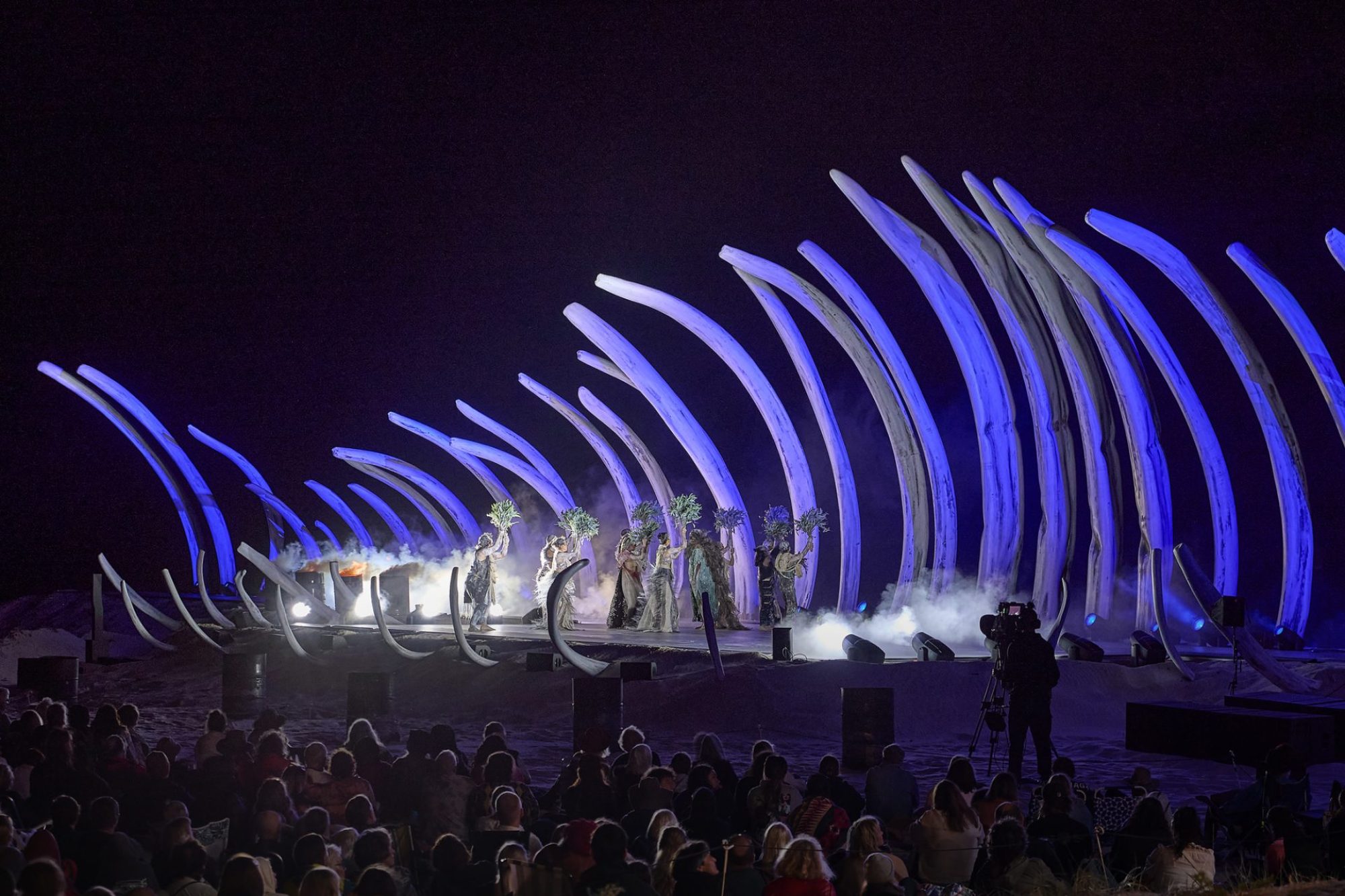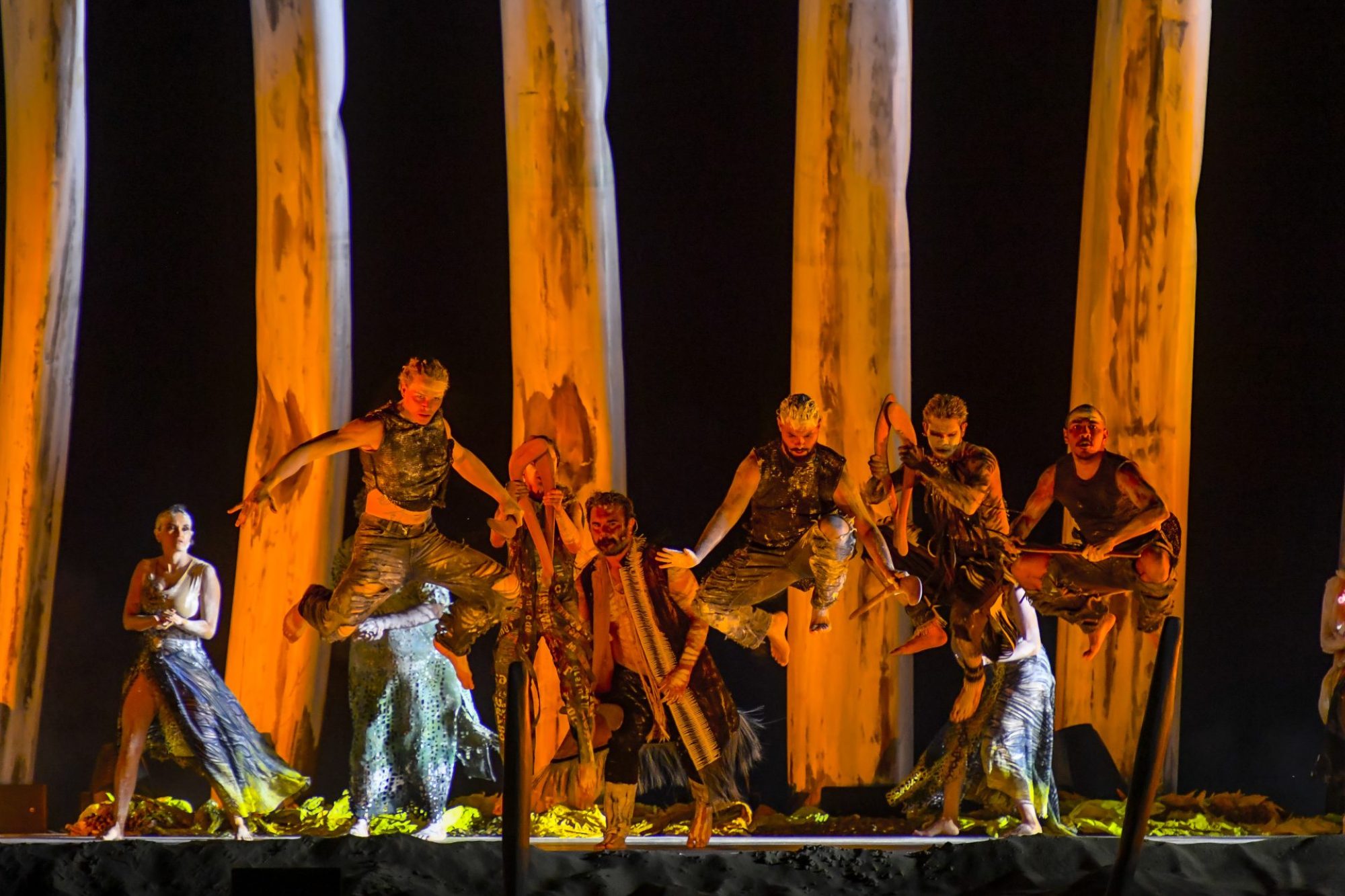The 2024 Adelaide Festival’s Spectacular Signature Event, Baleen Moondjan
The Adelaide Festival of the Arts always stages the kind of epic productions that no theatre, dance, or opera company could afford to stage outside of the festival environment. Over the years, productions have included a show with a cast of hundreds that built itself out of scaffolding over three days, an opera that filled the Adelaide Festival Centre’s Festival Theatre stage with water and included a live horse, and a giant nightclub made of shipping containers where a troupe of bobcats (the compact digger, not the animal), danced.
The 2024 edition did not disappoint in this regard. The Festival Theatre got filled with water again, but this time just the orchestra pit, for a production of Stravinsky’s opera The Firebird. But topping that was the Festival’s opening night premiere of Baleen Moondjan, an indigenous contemporary ceremony set on a 120 metre long stage framed by giant fiberglass whale bones, sitting on the beach at Pathawilyangga/Glenelg, often getting wet as the tide came up.
Baleen Moondjan was commissioned by the Festival from director Stephen Page, who recently left his position as the artistic director of Bangarra Dance Theatre, and who was also an artistic director of the 2004 Adelaide Festival. Directly from the programme; “Baleen Moondjan tells the story of a proud Elder, a curious granddaughter and the day a baleen whale comes close to shore. The whale is there to catch Granny Gindara’s spirit and carry it out to sea – a farewell, a celebration, a poignant start to a final journey. Baleen Moondjan recognises the intertwining relationships between all living creatures and our connection to earth, sky and sea.”
Baleen Moondjan was inspired by a story Stephen Page learned from his grandmother, a Ngugi/Nunukul/Moondjan woman from Minjerribah/Stradbroke Island. Production design was by Jacob Nash, and Page co-wrote the piece with Alana Valentine. Music was composed by Steve Francis, the costume designer was Jennifer Irwin, and the lighting designer was Damien Cooper.
So who volunteered their audio, lighting, and video gear to sit outside on a beach for the best part of 10 days, with a real chance it would take a dip in the waters of St Vincent Gulf? Adelaide’s own Novatech Creative Event Technology, headed by Managing Director Leko Novakovic.
“We’ve been working with the Adelaide Festival for many years,” relates Leko, “and this was their signature event for 2024. We kicked off the discussion early last year. It was quite a complex brief; we had to make this work on a beach, with a 120 metre long stage that’s probably going touch the water a few times, with massive, heavy fibreglass bones sticking out of it. And of course they didn’t want to have any PA visible, but we still had to get audio to an audience 100 metres deep. You know, typical stuff!”
First challenge on the bench was audio coverage, ideally with magical invisible loudspeakers. Over the last few years, Novatech have been innovators in deploying L-Acoustic’s sleek, streamlined line source SYVA in applications it was never designed for, namely outdoors. They’ve built custom winch-ups, rigging, and weather proofing and put them events including the Santos Tour Down Under international cycling race, and Adelaide Fringe drone show and projection event Sky Song in 2022.
“We developed a plan that used SYVAs at the front and then three lines of SYVAs as delays,” reveals Leko. “We used winch-ups and buried those in the sand. So all the audience saw was a slim column coming out of the sand. Yes, they could still see them, but they’re only 144mm wide, which is very different to two hangs of line arrays.”
Audio for the show included five main and five backup tracks played from QLab. Live instruments on stage included an electronic drum kit, guitar, bass guitar, and keyboard. Six actors wore DPA headset microphones with Shure transmitters and receivers, along with Shure IEMS on the actors and the band. FoH mixing duties were handled by a DiGiCo SD10, with a DiGiCo Quantum 225 on monitors.
Lighting designer Damien Cooper had a challenge on his hands with no rigging above the stage, and very little front of house. “The only place to rig anything was one scaffold tower at front of house right,” outlines Leko, “Damien then did all of his front wash from what was the stage left position only. We used the other side of that structure for the IMAG LED screen to hang on, and got the scaffold supplier Nexstage to build a space in the middle of the tower for us to use as tech and control centre for all our gear, protected by tarps.”
“We rigged the two trusses on the tower with six Ayrton Domino long throw profiles,” continues Leko. “Ayrton Domino Washes were brought to the downstage edges of the stage and placed in sunken troughs so they couldn’t be seen.”
The stage itself also couldn’t be seen. It was a timber structure, which, after it was assembled, was covered by pushing sand against it in ramps. While the stage surface was Tarkett, from the audience, it looked like the stage was a mound of sand. “We had these little troughs in the sand to hide lights and monitors,” explains Leko. “There were timber surrounds made for our lights and loudspeakers to keep the sand away. We did a lot of the downstage footlighting with LDDE FR 1440s, which are really low-profile footlights. The upstage wash was 30 Ayrton Perseos handling rear lighting effects like uplighting the whale bones supplied by Stage Kings.”
Amazingly for an outdoor gig on a beach, Novatech successfully used haze to enhance the lighting. “We got lucky with the wind,” admits Leko. “We only had one show where it got a bit breezy, but it still worked. We used our big MDG theONE hazers, which are the biggest hazers in the world. We also used six of our Base Haze Pros, hidden underneath the stage with ducting to sneak some haze out. Despite being in open air, the haze actually stayed in the air for quite a while.”
It’s testament to the quality of the ingress protection on the Ayrton products, and the build quality of Novatech’s stock in general, that everything not only performed by for the show but survived ten days on the beach unharmed. “With the right IP protections, sand stays out of the important parts,” confirms Leko. “We had a big team back at the shop when we brought everything back. The minute it all came in, we went straight into deep clean mode, just make sure there were no major problems with anything. Everything was washed and cleaned. We didn’t find any issues. Having that sort of high-end equipment out on a beach for that amount of time and not having any issues is really impressive.”
It wasn’t just a test for the gear, either “It was pretty trying conditions for our crew, and they really stepped up,” commends Leko. “Their bump-in day was 36 degrees, but they all had a smile on their face as they knew they were involved in something pretty special. Everyone who saw the show come to life was raving about it afterwards.”
